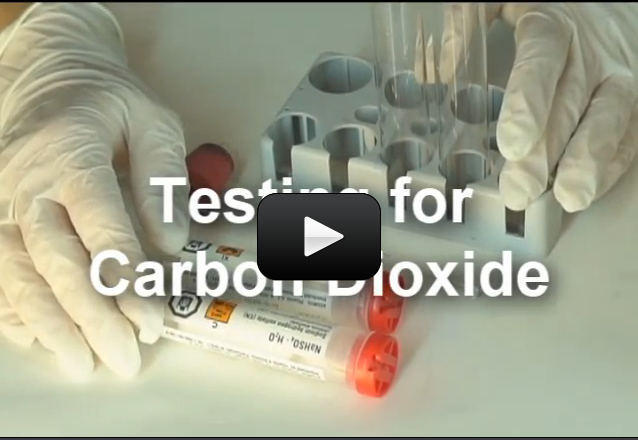This experiment is for advanced students. This lab builds on concepts from the previous carbon dioxide lab.
Limewater….carbon dioxide…indicators. We don’t know too much about these things. Sure, we know a little. Carbon dioxide is exhaled by us and plants need it to grow. Burning fossil fuels produces carbon dioxide.
Indicators…something we observe that confirms to us that something specific is happening. Lime water turns cloudy and forms a precipitate in the presence of carbon dioxide. Blue litmus paper turns red in the presence of an acid. The dog barking at the door and dancing around indicates that you better let the dog out, and quick, to avoid….a pet spill?
Please login or register to read the rest of this content.


Hey Aurora, it’s Andie. When I did experiment 31 for Chem C3000, my dad and I added 3x as much sodium hydrogen sulfate to the test tube without the limewater as you said to put in. When we were finished with the experiment, we noticed that on the bottom of the test tube there was two cm worth of solids. A few minutes later when we looked in the test tube, all of that solid had dissolved. Why did this happen?
Hey Aurora, it’s Andie. When I did experiment 31 for Chem 3000, my dad and I added 3x as much sodium hydrogen sulfate to the test tube without the limewater as you said to put in. When we were finished with the experiment, we noticed that on the bottom of the test tube there was two cm worth of solids. A few minutes later when we looked in the test tube, all of that solid had dissolved. Why did this happen?